The Best Portable Power Stations for Outages and Outings
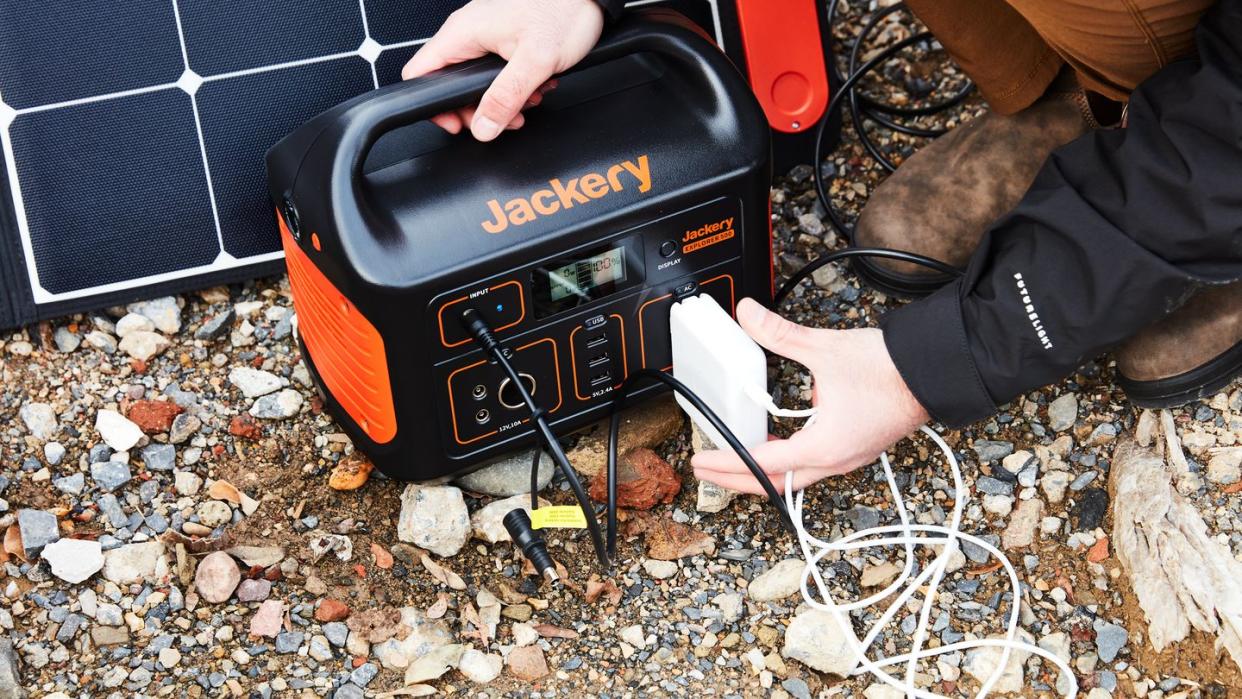
"Hearst Magazines and Yahoo may earn commission or revenue on some items through these links."
[table-of-contents] stripped
Whether you’re an avid camper looking to keep portable electronics charged or are looking for emergency backup power at home in the event of an outage, a portable power station can come in handy. While generators are typically powered by gas and are only for outside use, these power stations provide electricity from large batteries that are safe to use indoors. Plus, they’re fairly easy to transport, so you can actually take them with you on off-the-grid excursions.
The Best Portable Power Stations
Best Overall: EcoFlow Delta Pro
Best Mix of Size and Power: Jackery Explorer 1000
Most Versatile: Goal Zero Yeti 1500X
Best for Mobile Device Charging: BioLite BaseCharge 1500
Best Small Power Station: Anker 535
The Expert: I’ve been testing generators and power stations at Popular Mechanics for 5 years. In that time I’ve tested dozens of units, both big and small. Aside from testing, I also have experience using and testing these devices to power campers and RVs, off-grid. Additionally, over the years in my rural homes, I’ve had to install both manual and automatic transfer switches for using power stations and generators as back-up power sources for multi-day power outages.
What to Consider in a Portable Power Station
Gas Versus Battery Power
The heart of a power station is essentially a battery, whereas traditional portable power solutions—namely generators—are powered by internal combustion engines. Though gas generators are typically less expensive and provide more energy for a longer period of time, they tend to be noisy and can be used only outside and at a safe distance from your home to keep carbon monoxide exhaust from getting inside.
Gas generators are a great solution for temporarily providing power during an outage. They can be cumbersome to take on camping trips, though, especially when you consider the extra heft of fuel.
Although prices are coming down, power stations are often more expensive than generators. However, they come with a slew of benefits. They are more eco-friendly—particularly when powered by solar panels—quiet, and safe for indoor use. They typically come in a variety of sizes, so you can get a smaller, more portable unit for short camping trips or a day by the lake.
For a battery station to be as powerful as a gas generator, though, you will have to spend big bucks—often well over $1,000. While these batteries are rechargeable, some may take more than 8 hours to charge, so be sure to check the specs before you buy.
What Size Power Station Do You Need?
It’s important to know what you intend to plug into a power station in order to choose the right size. Many manufacturers have a chart with estimated power requirements for common appliances and devices to help add up what’s required. You can also calculate the figure by tallying the power consumption of specific devices and adding them together.
To calculate watts, multiply voltage (usually 120 volts) by the amps (amperage) required to run the appliance (usually found on a tag attached to the appliance). Do this for each item the generator will power.
Charging with Solar Panels
Some manufacturers sent us solar panels to charge up their power stations. While we weren’t testing them specifically, we did try them out to see how well they worked and how easy they are to use. In general, we found that it’s difficult to reach the maximum charging capability of any given solar panel.
This is due to a couple of reasons, but mainly because conditions are rarely perfect. We tested in Northeast PA on a mostly clear, sunny day and typically reached 60 to 70 percent of any given panel’s current-generation potential.
Since it generally takes multiple hours to recharge a power station, we had to reposition the panels frequently to maintain optimal orientation to the sun. This is not to say solar panels aren’t viable options for charging, just that if you’re going to rely on them, you need to plan accordingly. You may need more panels than you expect if you’re simply going by the numbers the panels are rated at to estimate how long charging will take.
How We Selected The Best Portable Power Stations
To test these power stations, we timed how long it took to discharge and recharge their batteries. To do this, we created a constant 450-watt load that we could run on each model to keep things consistent. To get to 450 watts, we selected four 42-watt incandescent light bulbs, one three-speed pedestal fan, and a small personal heater. Where applicable, we also paired the power stations with their companion app on a smart phone and monitored them remotely. We assessed performance, as well as ease of use and the feedback and data provided by each model’s display screen.
When choosing portable power stations for this list, we wanted to offer a variety of choices that will fit both your needs and your budget. Small, basic power stations start around $500, but larger models can cost over $3,000. We included options at both ends of this range, as well as a few middle-of-the-line choices. Though we haven’t tested the Jackery Explorer 1000 yet, we included it in this roundup because it’s highly regarded among consumers, with popular and promising features based on our experience with other models.
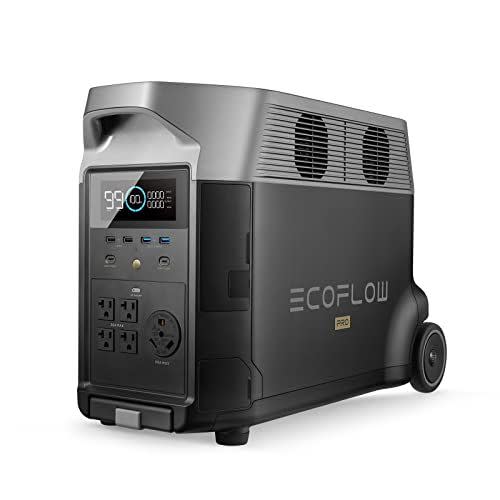
DELTA Pro Portable Power Station
ecoflow.com
$2999.00
EcoFlow’s Delta Pro is a massive power station that rivals the output of gas-powered generators. The brand claims it will power nearly any appliance, and after testing, we’re inclined to agree. With an output of 3,600 watts, it can handle multiple appliances, and you can bump the output to 4,500 watts with its built in X-Boost technology if you need more power.
In our testing, running with a continuous 470-watt load, as indicated on the Delta Pro’s display, it provided power for 6 hours and 57 minutes. Of course, in a home back-up during a power outage situation, we would run only what we needed to conserve power. To that end, we used it to power a full-size, 25-cubic-foot refrigerator—which it did for a remarkable 51 hours and 24 minutes.
Recharging the power station from 0% using a standard 120-volt home outlet, we were able to get back to full capacity in 2 hours and 36 minutes. You can also charge the system, with the included adapter, at EV charging stations, with solar panels (sold separately), a car charger, or combinations of these to speed things up.
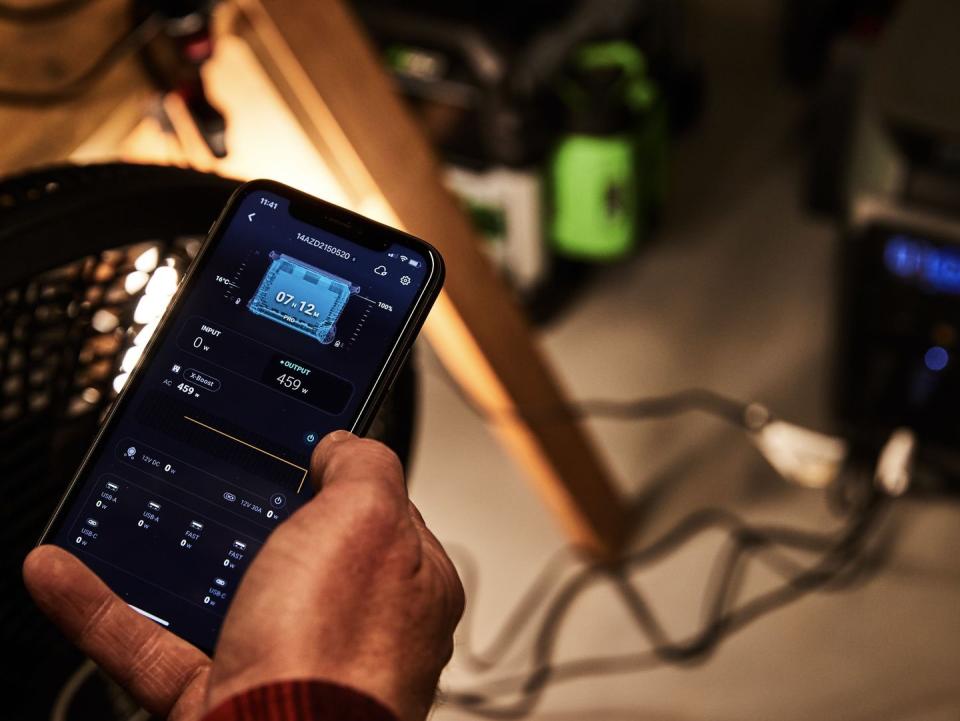
The Delta Pro’s display screen provides all the important information you need to manage you power consumption. We frequently checked the screen during testing to see the unit’s charge level, current load, and estimated run time at the current discharge rate.
All of this information is also accessible through EcoFlow’s app, which was the most intuitive and easy-to-use of those we tested. We connected the app both locally using Bluetooth and via Wi-Fi remotely to monitor the power station from anywhere. We could also toggle outlets on and off remotely, which is helpful if you’re trying to manage power station output to extend the battery life.
Initially, we tested just one Delta Pro, but since then, we’ve also tested the brand's Whole-Home Backup Kit, which includes two of the power stations and a dual voltage hub used to connect to your home service panel, via a transfer switch. We used this set-up to power critical circuits in a Northeast PA home in late winter.
The Delta Pro Whole Home Kit ran just over 24 hours, powering kitchen outlets, a full-size refrigerator, a chest freezer, a cable modem and wireless network, and a hot water boiler. The two Delta Pro power stations had been previously stored with 100 percent charge for 8 months, and maintained their full charges.
Our testing was performed under normal usage conditions—run time could easily be extended by employing standard power conservation strategies like lowering the thermostat, powering the fridge and freezer for four hours on and four hours off, and only opening the them when absolutely necessary. EcoFlow’s Delta Pro Whole Home Kit is a legitimate home back-up system that can operate inside your home, with none of the risks or potential hassles of running a generator.

Explorer 1000 Portable Power Station
amazon.com
$999.00
The Jackery Explorer 1000 is a popular portable power station with a max capacity of 1,002 watt-hours. It’s relatively light for its size and easy to carry, making it a great option for camping, barbecues, outdoor parties, and sporting events. It has three standard AC outlets, unlike the smaller Explorer 500 we tested, so it will be easier to power multiple items, without resorting to power strips or cable splitters.
The larger capacity will help the Explorer 1000 fill in as emergency back-up in power outage situations, as it could easily power a full-size refrigerator or freezer for several hours. It has the requisite ports to recharge your small electronics: two USB-C ports, two USB-A ports, plus a 12-volt car outlet.
Jackery claims it can charge a laptop eight times, and run an electric grill for 50 minutes—all reasonable claims, based on our testing of the smaller Explorer 500. Like other portable power stations, it can recharge via a solar panel (sold separately), an AC outlet, or your vehicle’s 12-volt outlet, and takes 6.5 hours, 5.5 hours, and 11.5 hours to recharge, respectively.

Yeti 1500X Portable Power Station
amazon.com
1259.00
The Yeti 1500X is the bridge between emergency home backup and off-grid power for camping, tailgating, or remote excursions. We ran it from 100% down to 0% using a 459-watt load over 3 hours and 11 minutes. For reference, that’s like running four refrigerators, continuously, for the same amount of time. We actually did use the Yeti 1500X to power one refrigerator during our testing, and we were able to keep it going for 28 hours and 17 minutes before the battery died.
When we recharged the Yeti from a wall outlet with the included AC charger, it took 13 hours and 11 minutes to go from 0 to full. You can cut that down to as little as 3 hours (claimed) with an optional 600-watt power supply. You can also charge from your car with Goal Zero’s optional car charger, or using a Boulder Solar Panel Briefcase.
Using Goal Zero’s free app, we were able to pair the Yeti 1500X via Bluetooth and set it up to access via Wi-Fi remotely. Being able to monitor charging and battery level remotely made things easy for testing. That convenience translates well to home or camping use, being able to know how much longer the battery will last—or when the power station is back up to a full charge.
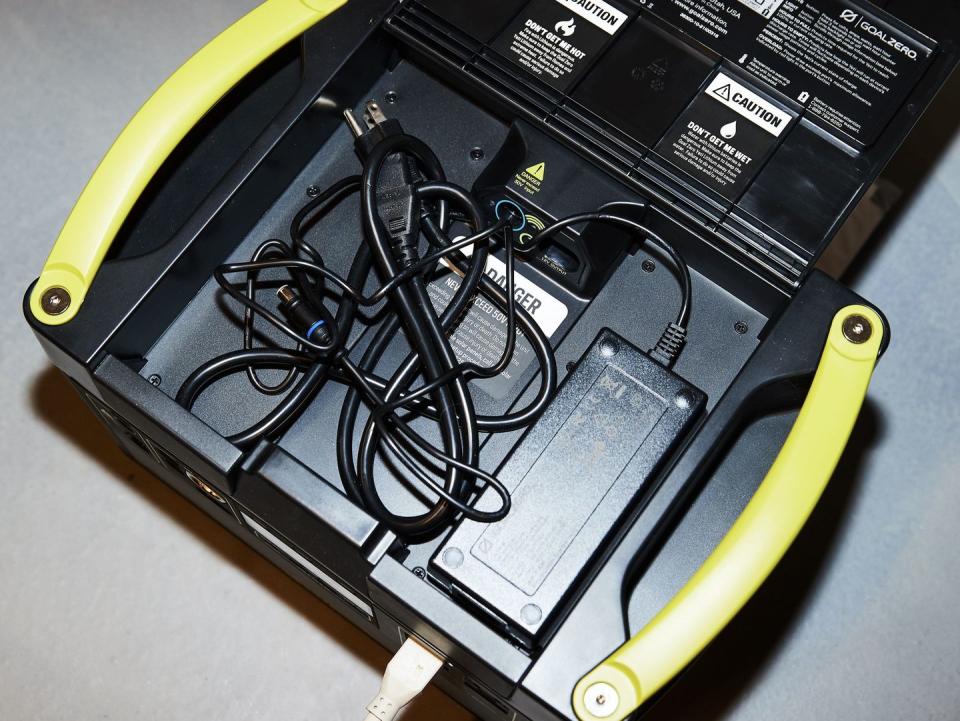
One thing we learned testing power stations is that cable management can be a hassle. With multiple charging cords, plugs, and adapters, we often got cables mixed up. We didn’t have that problem with the Yeti, though, because it has a built-in cable storage compartment—a welcome feature, to be sure.

BaseCharge 1500
amazon.com
$1359.20
Like the Yeti 1500X, the Biolite BaseCharge 1500 bridges emergency power back-up and off-grid camping. It’s big enough to power large appliances for significant periods of time, as well as keep your small electronics and appliances going for a weekend in the woods. The BaseCharge 1500 doesn’t have the ability to connect with an app for monitoring, but everything you need to know is displayed on the front panel of the unit—remaining run time, charge time, and current rate of usage.
In our testing, we used the BaseCharge 1500 to power a full-size, 25-cubic-foot refrigerator, in normal usage, for 24 hours and 6 minutes. At only 28.5 pounds, it’s almost 40 percent lighter than the Yeti 1500X with a similar capacity—making it significantly easier to transport. It did take us over 14 hours to fully charge it with the included plug-in charger. Solar charging panels are also available separately, to help recharge or prolong the runtime in off-grid situations.
The unit has three 110-volt outlets, two USB-A, two USB-C, and one USB-C PD ports. Plus, a wireless charger is built into the top of the power station.

535 Portable Power Station
homedepot.com
$499.99
Anker’s 535 Portable Power Station is intended for smaller power needs and ideal for use as a mobile charging station for your devices. It’s not designed for loads over 500 watts: That means no hair dryers, toaster ovens, or coffee machines. We used all four 110-volt outlets to run a total load of 424 watts, as calculated by the 535, for exactly an hour before the battery kicked it, which matched the estimated run time on the display to the minute.
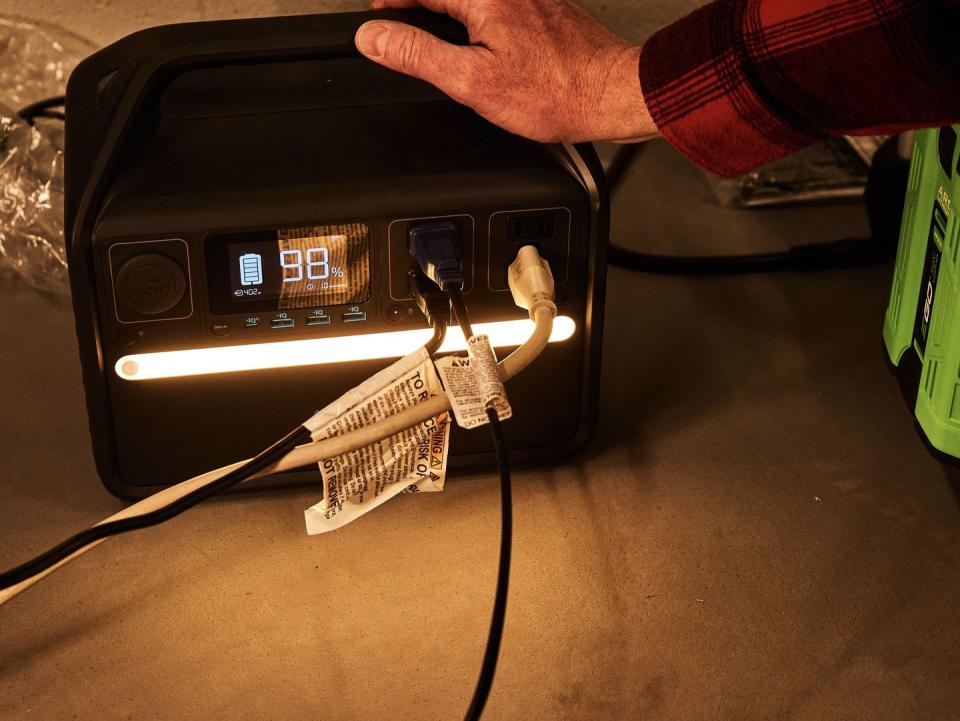
Admittedly, our test load is higher than what you might typically run off the 535, but we use the same load across all power stations we test. Note that devices using 100 watts or less can be sustained for 5 to 10 hours. More in line with typical use, the 535 will charge laptops and tablets several times over and mobile phones dozens of times.
When it comes to recharging your devices, one of our favorite features, power-saving mode, automatically shuts the 535 down once devices reach a full charge. We timed recharging, from 0- to 100%, at 4 hours and 56 minutes from a standard wall outlet. It can also charge from your vehicle with the included cable.
We found the information displayed on 535’s screen helpful in managing power consumption and charging. Data it provides include current power in watts—coming in during charging or going out during use, estimated run time, battery charge level, and which outlets are in use.

HomePower Two Pro Solar Bundle
amazon.com
$2975.00
Geneverse sent us their HomePower Two Pro Solar Power bundle, which included two 200-watt portable solar panels. This configuration might be an ideal solution for car camping and van or RV life, including everything you need to keep powered up off-grid.
Using the standard 110-volt charger plugged into the grid, we were able to charge the HomePower Two Pro in under 3 hours. In the home, we used it to power a full-size 25-cubic-foot refrigerator in normal use for 33 hours and 53 minutes. In an emergency backup power situation, opening the fridge only when absolutely necessary, and cycling it on/off in 4-hour intervals, that could be extended to nearly three days. Of, course using the 400 watts of solar panels to recharge will help extend that even more.
We were able to top out the charge rate at 388 watts, but it’s important to note that the rate will fluctuate. To get consistently high charge rates, we needed full sun with no clouds, no trees, or other obstructions that cast shadows, and the panels oriented 90-degrees from the sun. So, to keep getting that high charge rate, you need to monitor and reposition panels—as is true for any portable solar charging system.
When connected to a smartphone with Geneverse’s app, the HomePower Two Pro can be monitored remotely and show charge levels, rate of discharge, and projected run time—you can also toggle the AC and DC outlets, on and off.
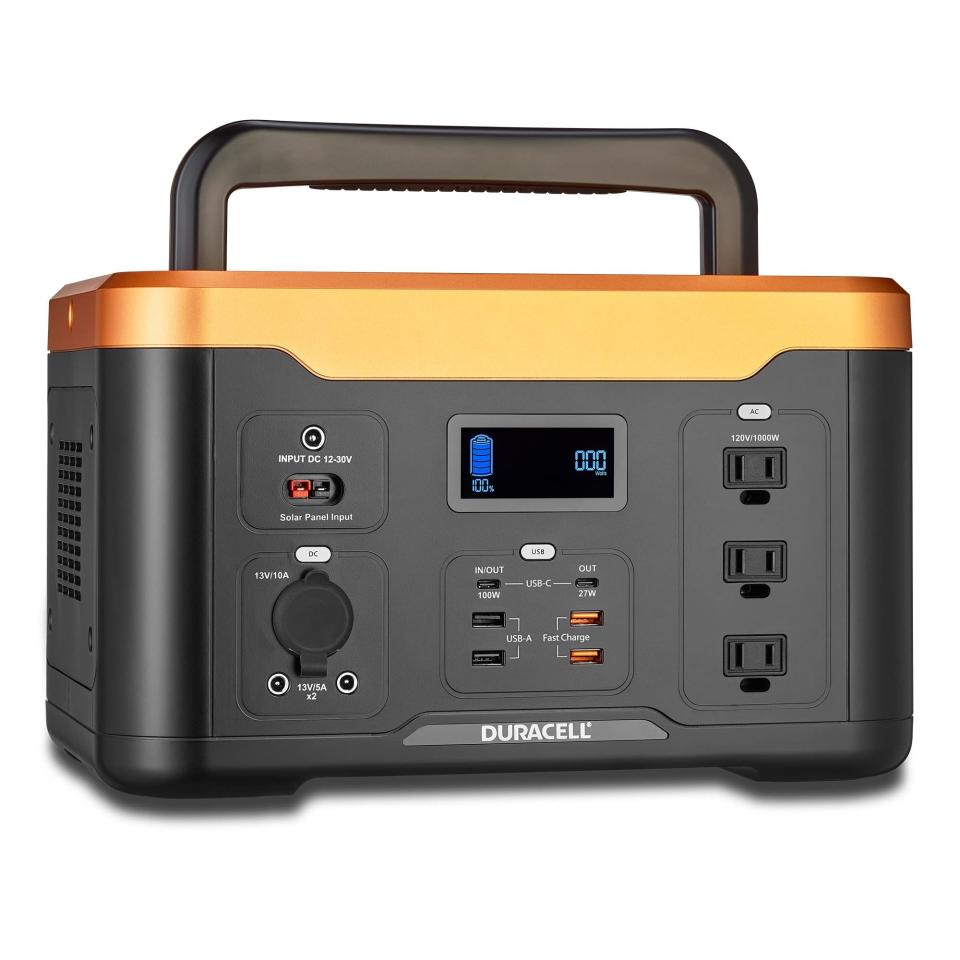
Power 1000
amazon.com
$599.00
For the price, Duracell’s Power 1000 is hard to beat. It is nearly half the price, per watt, of other models in the 500 to 1500 watt range. And its performance per watt is on par or better than that of other models in that range.
We were able to run a full-size refrigerator, under normal usage, for 13 hours and 43 minutes, before exhausting the battery. Running on a constant load averaging 470 watts, it ran for 1 hour and 57 minutes. Our test results indicate the Power 1000 would be suitable for using as an emergency back-up in a power outage, or with its relatively small size, for a weekend camping, to keep your personal electronic devices charged up.
The relatively low cost of the Power 1000 means there are some compromises—namely that it doesn’t feature Wi-Fi or Bluetooth connectivity, so you cannot monitor it from your smart phone.
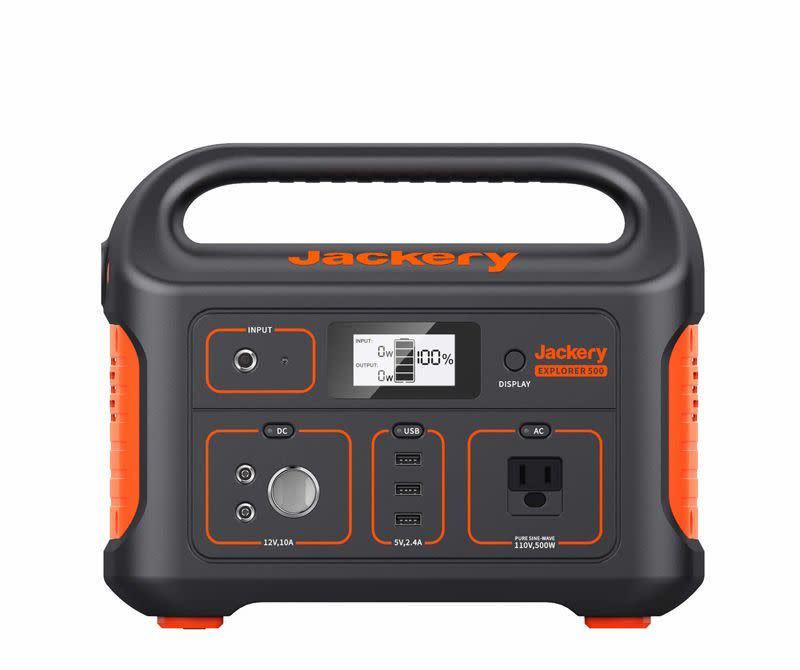
Explorer 500 Portable Power Station
amazon.com
$499.00
The name says it all for Jackery’s Explorer 500. Ideal for camping and travel, it’s designed for low- and medium-power devices—anything under 500 watts. That means skip the toaster oven or microwave. The Explorer 500 only has a single 110-volt outlet, so we had to use a power strip to test with the same devices used on other models.
The display gives you the critical information you need: power coming in during charging, power going out during use, and battery charge level. According to the display, our testing load totaled 478 watts, which ran for 1 hour and 2 minutes before depleting the battery. Using the Explorer 500 as a mobile charging station, you can expect to recharge a laptop up to five times or a mobile phone up to 50 times.
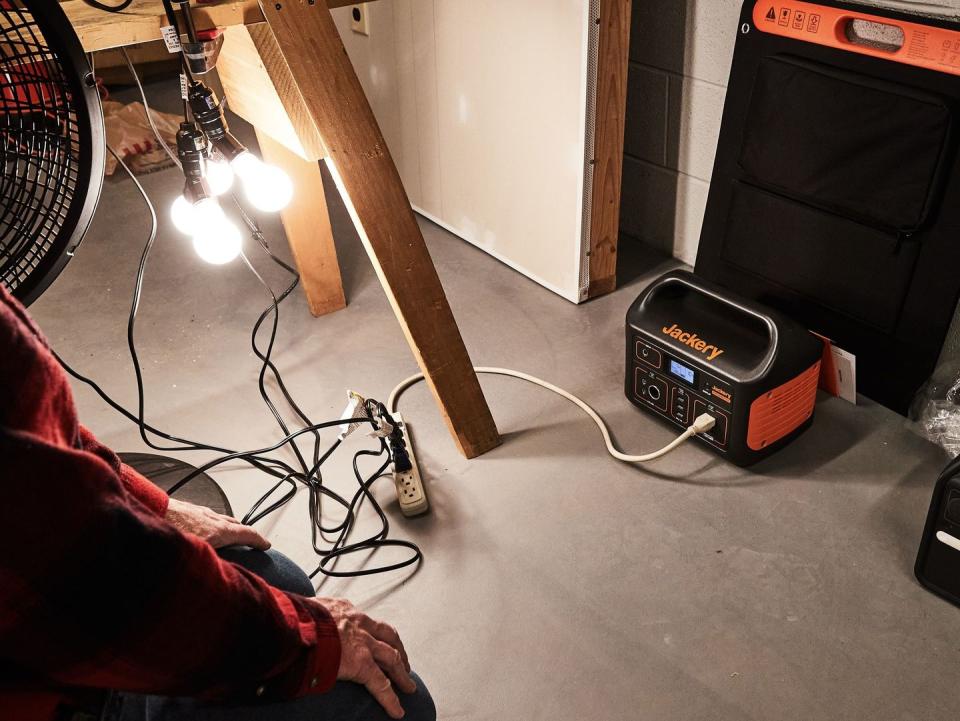
We timed recharging the Explorer from a wall outlet in 7 hours and 1 minute. It can also charge via an included adapter for your car or using an optional solar panel. Jackery sent us a Solar Saga 100 to try out with it. While solar is a great option to charge your power station or keep it topped up, to get the most out of solar charging, you need to keep the panels oriented toward the sun.
In our testing day in Pennsylvania with the sun lower in the sky, it took 2 hours per 10% of battery charge and required moving the panels to keep them oriented for the strongest sunlight.
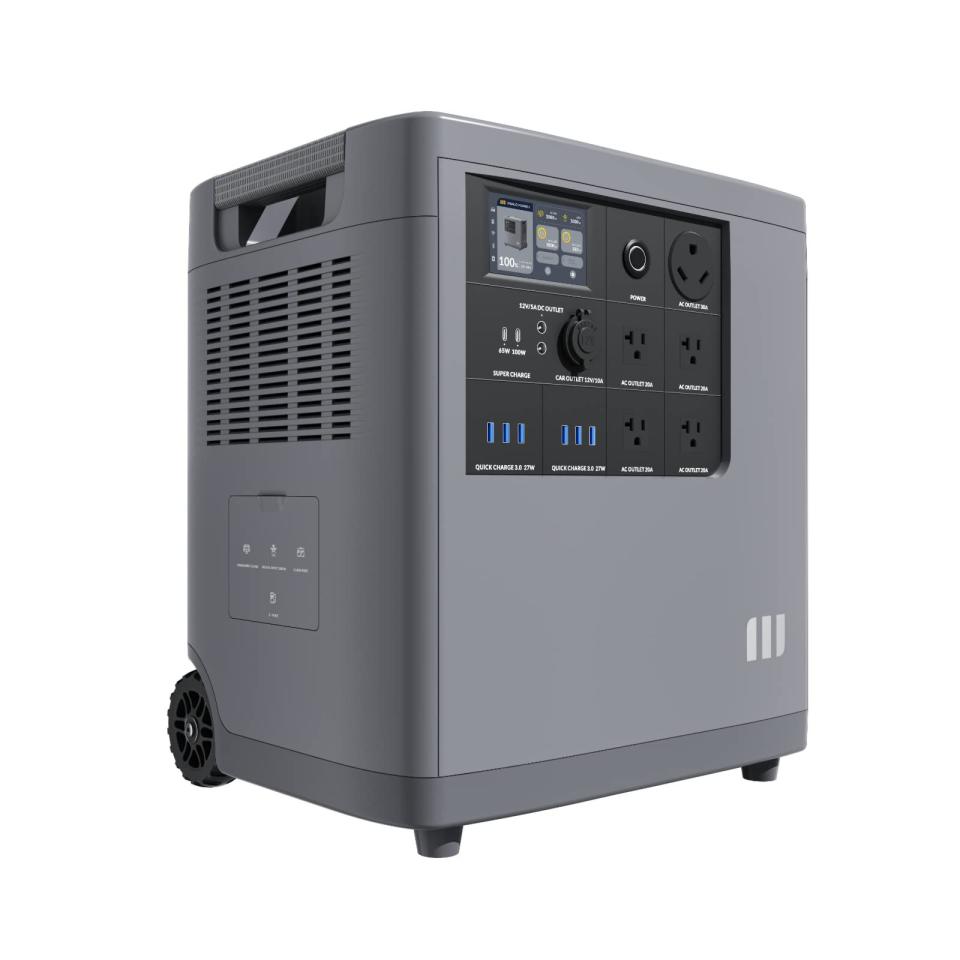
E
amazon.com
$1999.00
Mango’s Power E power station can be whatever you need it to be. It can be used alone as a portable power station, or it can be paired with an expansion battery to double its capacity. It can also be paired with another Mango Power E using an mSocket Pro (sold separately) to provide 240-volt back-up power for your home. If you want an automated stand-by power solution, two Power Es can connect to an mPanel Pro to switch up to four critical circuits to battery power in the event of an outage.
Of course, the Power E works just fine on its own. Although on the heavy side at 100 lbs, it is about the same weight as other similarly sized power stations. To make moving it about easier, Mango has designed the Power E with wheels and an extendable handle so it can be tilted and moved around like a hand truck.
So we rolled it next to our test refrigerator, plugged it in, and ran it for 43 hours and 51 minutes before the battery was drained. Running a constant 470-watt load, it ran for 5 hours and 24 minutes, from full charge to empty. Using Mango’s app, paired with the Power E, you can monitor charge levels and manage power consumption by turning its outlets on or off. While we only charged the Power E via an AC outlet, it can also be charged by up to 2000-watts from solar panels.
Q&A
Do battery power stations require routine maintenance?
No, not in the normal sense. You should charge it fully, about every three months, when not in use. Be sure to unplug it once it has reached full charge.
When does a fuel powered generator make more sense than a battery power station?
There isn't a universal right answer—it really depends on several variables. If you live in an apartment or condo, and don’t have a place to safely run a generator, then your only option is a power station. Scale comes into play too—if you only need to charge a phone or laptop, then a small power station is the most convenient way to go.
For emergency backup power, it depends on how many appliances and devices you expect to power, and for how long. The longer you need significant amounts of power, the more sense a fuel-powered generator may make. A portable generator may be the least expensive investment, but if you have to run it multiple days, the cost of fuel will start to add up.
For emergency backup over an extended period, you might be able to rely on a medium-to-large portable power station, with a small generator to recharge it.
What is the lifespan of a portable power station?
A power station's lifespan will vary by battery type, inverter/charger design, and manufacturer. It can vary widely from one model to another, and understand that runtime will slowly degrade over time.
Generally, the battery won’t just fail with an end-of-life event—it simply won’t hold as much of a charge. That said, manufacturers estimate lifespan in thousands of discharge cycles. It’s common to see numbers from 1,000 to 10,000 cycles. For reference, 3,500 discharge cycles would be about 10 years, if used every day.
You Might Also Like
